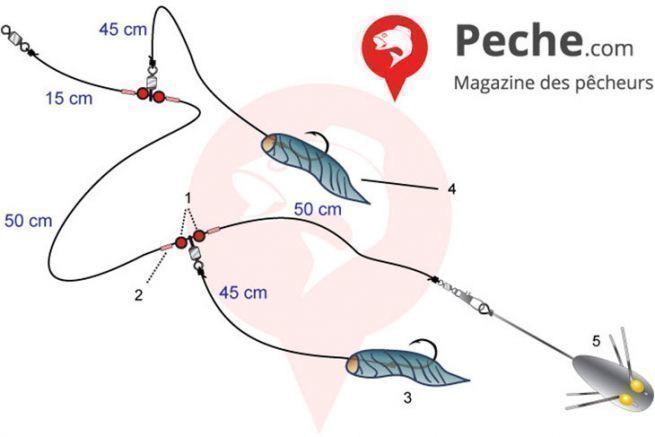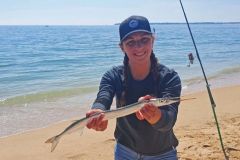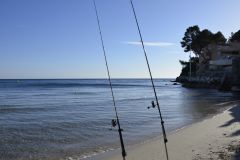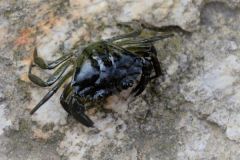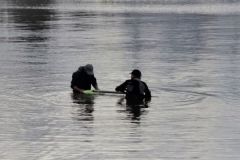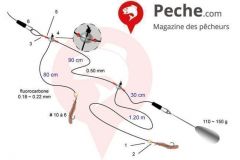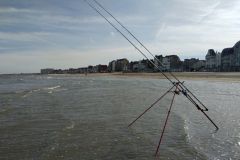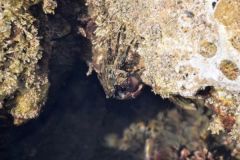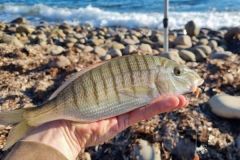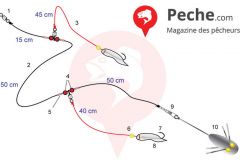While large stingrays are best caught by boat, some beautiful specimens are released each year from certain beaches. To attract them, opt for a piece of oily fish such as mackerel. Mackerel is highly traceable in the water, and can be spotted from a distance by stingrays.
Assembly
The assembly consists of 2 fairly long, large-diameter shanks, i.e. 0.40 to 0.45 mm. They end with an octopus hook, round and with a wide opening in size n° 3/0. The line body must withstand hard casting and be able to take off a nice ray buried in the sand.
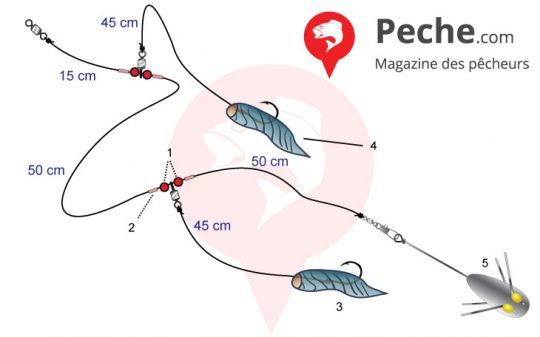
- line body and snatch: nylon 0.50 to 0.60 mm
- stack blocking: 2 round beads (1) + tube or bead bonded to cyanolite (2)
- wide-mouthed round hooks n°3/0 (3)
- 0.40 to 0.45 mm nylon stackers
- bait: strip of mackerel
- grapple lead 110 to 170 g (6)
Using the assembly
Stingrays like areas that mix sand and rock. It is therefore necessary to hold the bottom precisely on the sand without drifting into nearby rocks. You'll need a large grappling sinker. Wait 40 minutes before surfacing to check your baits.
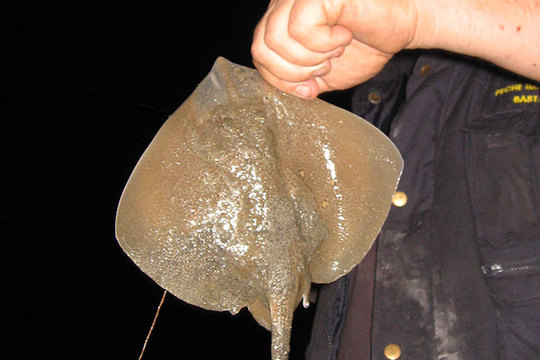
Surfcasting equipment
Rods in the 4.20 to 5 m range weigh 100 to 300 g. The reel size 5,000 to 20,000 (depending on the brand) is in the 500 to 900 g range and contains at least 200 m of fine nylon in 0.30 to 0.40 mm. Before assembly, we use a coarse nylon (ripped) the length of the rod in 0.50 to 0.60 mm.
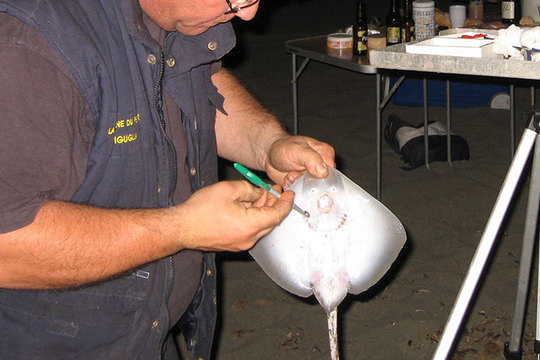
Tips for success
Although stingrays live on the seabed and move along the bottom, they are not above a trip to the surface to seize their prey. A floating pearl is therefore not forbidden.

 /
/ 